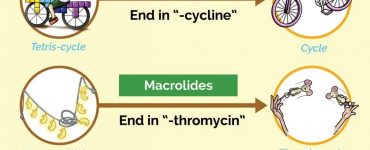Tips on Staying Focused While Prepping for Step 1 | How To Study Effectively

By Jamie from TheStriveToFit
Jamie is a current 3rd year medical student working towards her MD degree. She runs a YouTube channel about her life in medical school and shares tips and advice on how to be a well-balanced student in any academic discipline. In addition to medicine, her other interests include cats, weightlifting, food, and fashion. Check out her channel for more information as she details her Step 1 prep!
Step 1 is one of the most daunting exams in medical school. Official preparation takes anywhere from 4-8 weeks and most students have a very tight schedule on specific topics they need to cover each day. This means minimizing distractions and procrastination is essential to staying on schedule and taking the exam on the planned date.
Here are some tips and tricks I used to make sure I met all my study goals each day and be as efficient as possible during my Step 1 preparation time:
1. Keep your phone out of sight and turn off all phone and computer notifications.
This sounds so simple, but it actually makes a huge difference. Even if you’ve been using your phone mostly to “look things up,” an inevitable text or a notification from social media can be irresistible to follow up.
Best tip I have is to turn the phone off (not silent mode) and keep it in another room or in a locker if you are studying at school. Schedule “phone and snack” breaks throughout the day if you’d like, but make sure you turn the phone off again when you are done!
2. Know exactly what you’re going to study.
Know exactly which topics you’re going to study and what resources you are going to use. This minimizes wasted time trying to figure out “where to start” each morning. If you have no idea where to start:
- Try assigning a number of days you think you might need for each system (4 days for cardiology, 3 days for renal, etc). You may want to give extra days to more “high yield” topics or to your weaker topics.
- Break up those days into topics within each system (for example: one day each for physiology/embryology, pathophysiology, pharmacology, and a catchall day to cover topics you don’t feel comfortable in).
- Finally, break up each day into the resources you’d like to use (for example: 8-10am question bank, 10-12pm lecture videos, 1-2pm Picmonic videos/quizzes, etc).
You can always reevaluate yourself every couple weeks and change the number of days you assign to each system. Your schedule should be customized to YOUR specific needs so try to be as realistic as possible and as flexible as needed.
3. Schedule your caffeine intake.
Most students will have time off from school to prepare for Step 1, which gives them the freedom to decide what times of day/night you want to dedicate to studying. Personally I decided to stick to the conventional “study during the day/sleep at night” schedule so that it would mimic the actual exam day schedule. This meant my caffeine consumption was limited to morning and early afternoon.
From my personal experience, consuming caffeine later in the day affected the quantity and quality of my sleep at night, which in turn affected the following day. As discussed before, losing a day due to poor sleep can be significant when you are on such a tight study schedule. Plan your caffeine consumption strategically so that you can get optimal sleep and be refreshed!
4. Schedule your breaks and stick to them.
When it came to taking breaks during the day, I felt it was important to utilize what I like to call “structured flexibility.” My breaks were structured, in that I always had 3 hours off total in between the start of my day to going to bed: I had two hours around noon for a workout and lunch, and another hour later in the day for dinner. I worked out and had lunch around the same time every day, but my dinner break started whenever I finished my afternoon study goals or whenever I got too hungry to be efficient.
The amount of break time and the optimal degree of structure may vary from person to person—but one important takeaway is to make some sort of a plan in advance and stick to it. Last thing you want to do is to tell yourself that you will study as much as you can until you just can’t anymore and you’ll take a break. Towards the end of your exam preparation period, you’ll feel more and more tired/burnt out—and having a regular scheduled/structure of rest will help you stay on track and motivated.
5. Leave your study area when you’re taking a break.
When you’re taking a break, take your computer and go somewhere else. It’s so easy to start watching a TV show or browse social media websites during your break time and never go back to actually studying when your scheduled break time is over (unintended Netflix binge, anyone?). It’s helpful to use your study area only for studying and resting areas only for resting (i.e. don’t study in bed). Do whatever you can to keep your study area as distraction-free as possible and your resting areas as relaxing as possible. This will help to mentally separate studying from resting and get your mindset ready for whatever task you have at hand.
6. Have some self-control!
SelfControl is an app for macs that allows you to block out a list of sites that you don’t want to go to during a specific time period (Facebook, Twitter, YouTube, etc). If you know you need that extra control, this app is worth checking out!
I hope these tips were helpful! There is no such thing as one “correct” way to study and the success of each strategy depends very much on the individual. My last parting tip for any 1st or 2nd year medical student is to really understand your study style and find out what works best for you! I believe success in medical school (or any other discipline) requires frequent self-evaluations and self-reflections—Step 1 prep is no different and developing a strong foundation now will definitely help with future board exams (many more to come)! Best of luck!
Editor’s Note: If you want to check out Picmonic, one of the resources mentioned in Jaime’s blog, click below.















